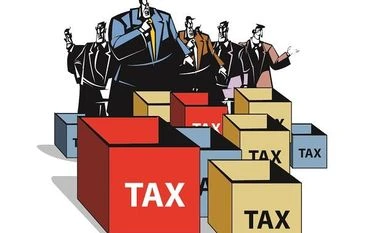Almost 90 per cent of manufacturing entities are unlikely to benefit from the recent cuts in the corporation tax rate.
Around 88 per cent of manufacturing enterprises that filed tax returns will continue to be taxed at a higher rate.
The highest burden will fall on proprietorships, which will be taxed at the highest marginal income-tax rate, 42.7 per cent, against the corporation tax rate of 25.17 per cent now.
The gap is even wider with new manufacturing companies, which will be taxed at 17.2 per cent. Traditionally new businesses start as proprietorships and then structure themselves as companies as they scale up. Now there is a tax incentive to start as a limited-liability company if the entrepreneur wants to reinvest profit rather than earn dividend (see the adjoining charts).
An analysis of the data from the income-tax department shows that 11.2 per cent of manufacturers in the country are organised as companies. The level of corporatisation is the highest in the auto sector, at around 20.3 per cent, and is the lowest in the diamond-cutting business, at 2.2 per cent.
“If you exclude the tax on dividends, companies now enjoy some tax advantage over other forms of business entities, especially proprietorships, where many owners could be taxed at the highest rate of marginal income tax,” says Vikas Vasal, partner and leader tax, Grant Thornton India.
Partnerships and limited-liability companies have an effective tax rate of 34.94 per cent including surcharge and cess while individuals and proprietorships are taxed at 42.74 per cent, which is the highest rate of marginal tax (see the adjoining chart).
In all, only 5.6 per cent of all tax-paying businesses in the country are set up as companies, and in the rest, owners pay personal income tax on their business income.
The number of corporate businesses, according to the last available data, is 790,000. In comparison there were 21.5 million non-corporation tax-paying businesses in 2016-17. The analysis is based on income-tax numbers for FY17, which is the latest available.
The level of corporatisation is 94 per cent for the services sector. The segment includes consultancy services (12.8 per cent corporatised) and information technology and outsourcing firms (50.2 per cent corporatised). Corporatisation in some service segments like computer training and other coaching institutes is 4.2 per cent.
Tax experts, however, say the effective tax rate for individual business persons and proprietors may be lower than 42.7 per cent.
“Unlike corporation tax, which is linear, personal income tax is progressive and the highest rate kicks in at a much higher level of income. This means individual business persons have a lower proportion of their business income as tax than suggested by the highest rate of the marginal tax rate,” says Vikas.
There is now for the first time a wedge between the corporation tax rate and highest rate of marginal income tax. This could trigger corporatisation, especially among large businesses that could live with the higher compliance cost of owning a limited-liability company.
“A differential tax structure on companies and non-companies can act as an incentive for corporatisation for businesses in India,” says Surabhi Marwah, tax partner, EY India.
Corporatisation, however, could allow small firms to grow faster.
“Structuring a business as a company has advantages such as better access to capital and the ability to attract investors. The recent amendment will also allow companies to scale up better than they could as a non-corporate entity with additional cash (generated on account of tax savings),” Marwah said.
Hitesh Gajaria, Partner and Co-Head, Tax at KPMG in India, said that the rate cut and other benefits are expected to lead to new investments in the manufacturing sector, among others. Lower taxes are also likely to result in a bigger surplus to corporates. This could have indirect benefits for smaller businesses.
“Increased business activity will also benefit the small businesses (non-corporate) in terms of growth in volume and business as the manufacturing sector procures quite a bit of their requirements from MSME (Micro, Small and Medium Enterprises) sector,” said Gajaria.
Outside of manufacturing and services, businesses with the least amount of corporatisation include white-collar professionals such as lawyers, and chartered accountants. Non-corporates account for 99.8 per cent of legal professionals. They account for 99.9 per cent of businesses such as chartered accountants and auditors.
The number of non-corporate entities among the two sectors run into lakhs. The number of corporate entities number less than 1,000.
Among other key sectors, non-banking financial companies (NBFCs) are one where only 15 per cent are non-corporate entities. Power and energy businesses are also largely run as corporate entities, with non-corporates only accounting for 23.6 per cent of the businesses. Such sectors are likely to benefit from the government’s decision on lower corporate tax rates.
Unlock 30+ premium stories daily hand-picked by our editors, across devices on browser and app.
Pick your 5 favourite companies, get a daily email with all news updates on them.
Full access to our intuitive epaper - clip, save, share articles from any device; newspaper archives from 2006.
Preferential invites to Business Standard events.
Curated newsletters on markets, personal finance, policy & politics, start-ups, technology, and more.
)